The Schwaketenbad, a new aquatic center designed by Behnisch Architekten in the German city of Konstanz near the Swiss border, is intended to appeal to a wide variety of visitors. The indoor complex is geared toward families, school groups, competitive swimming clubs, and recreational users. Replacing a 1980s facility that burned down in 2015, the Schwaketenbad has an expansive program, with two six-lane, 25-meter-long pools, dedicated pools for swim instruction and diving, and a wading pool for those who don’t swim at all. It has areas for splashing about, such as a water playground with an adjacent toddler pool, and two water slides that snake out and back into the building. It even has spa-like amenities: a warm-water pool, a steam bath, and a “sauna” room heated by infrared light.
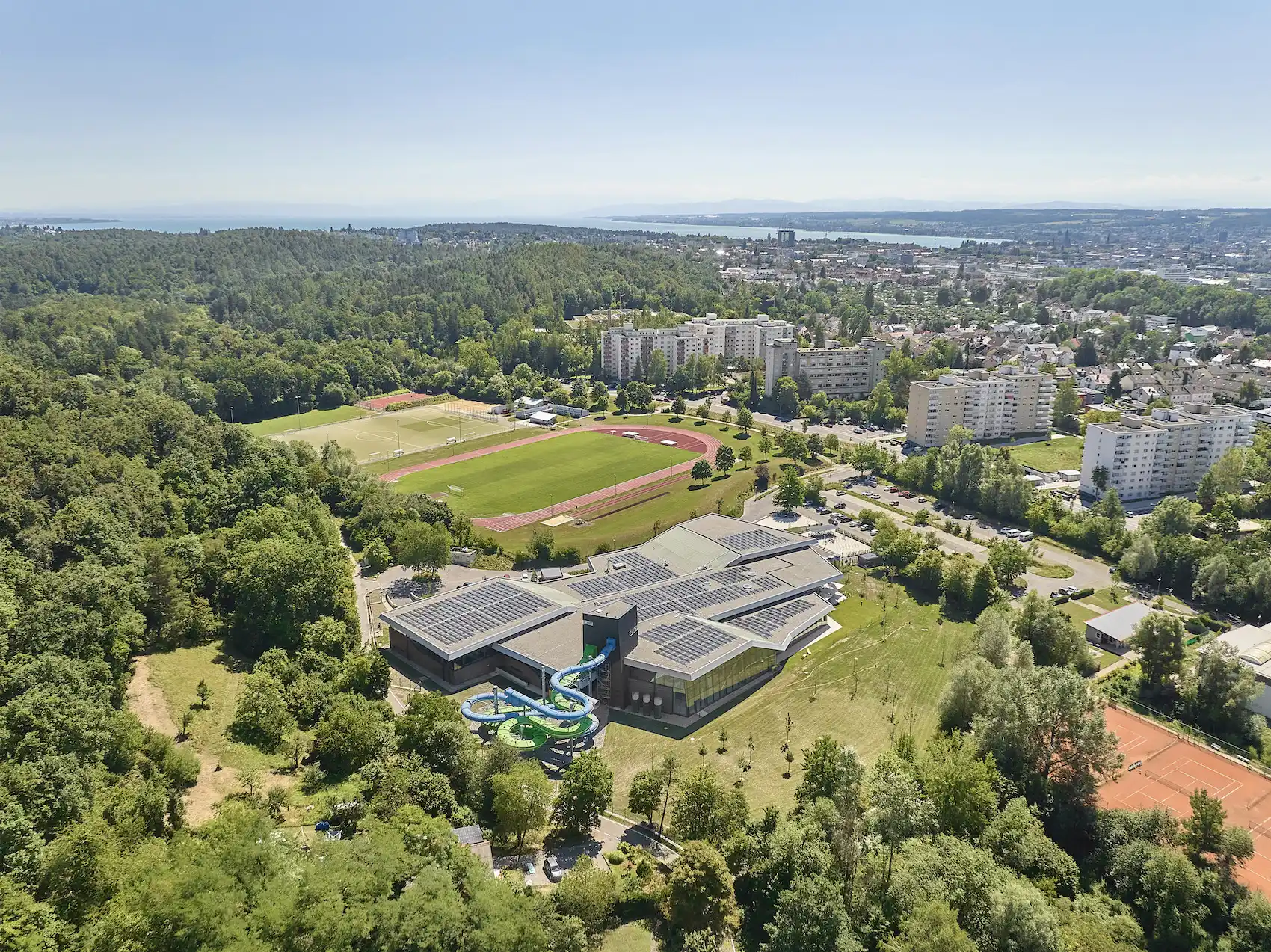
Schwaketenbad is located on the forest-flanked outskirts of Konstanz, a small city in Baden-Württemberg located on the banks of Germany’s largest lake. Photo © David Matthiessen
.webp)
One of two 25-meter-long lap pools at the sprawling facility. Photo © David Matthiessen
This all adds up to nearly 110,000 square feet, making it the largest indoor leisure pool in any of the towns surrounding Lake Constance (or, in German, the Bodensee). Given the facility’s sheer size, the key challenge was creating a structure with a relatable scale and spatial interest. “We did not want to make a big chunk of a building,” says Alexander Seib, project leader at Behnisch’s Stuttgart office. So, instead of arranging the many elements—which were to be all on one level for accessibility—as a single monolithic volume, the architects sheltered them under three contiguous roofs of slightly different shapes, sizes, and heights. The roofs are “siblings that speak the same language, but each has its own unique characteristics,” explains Seib.
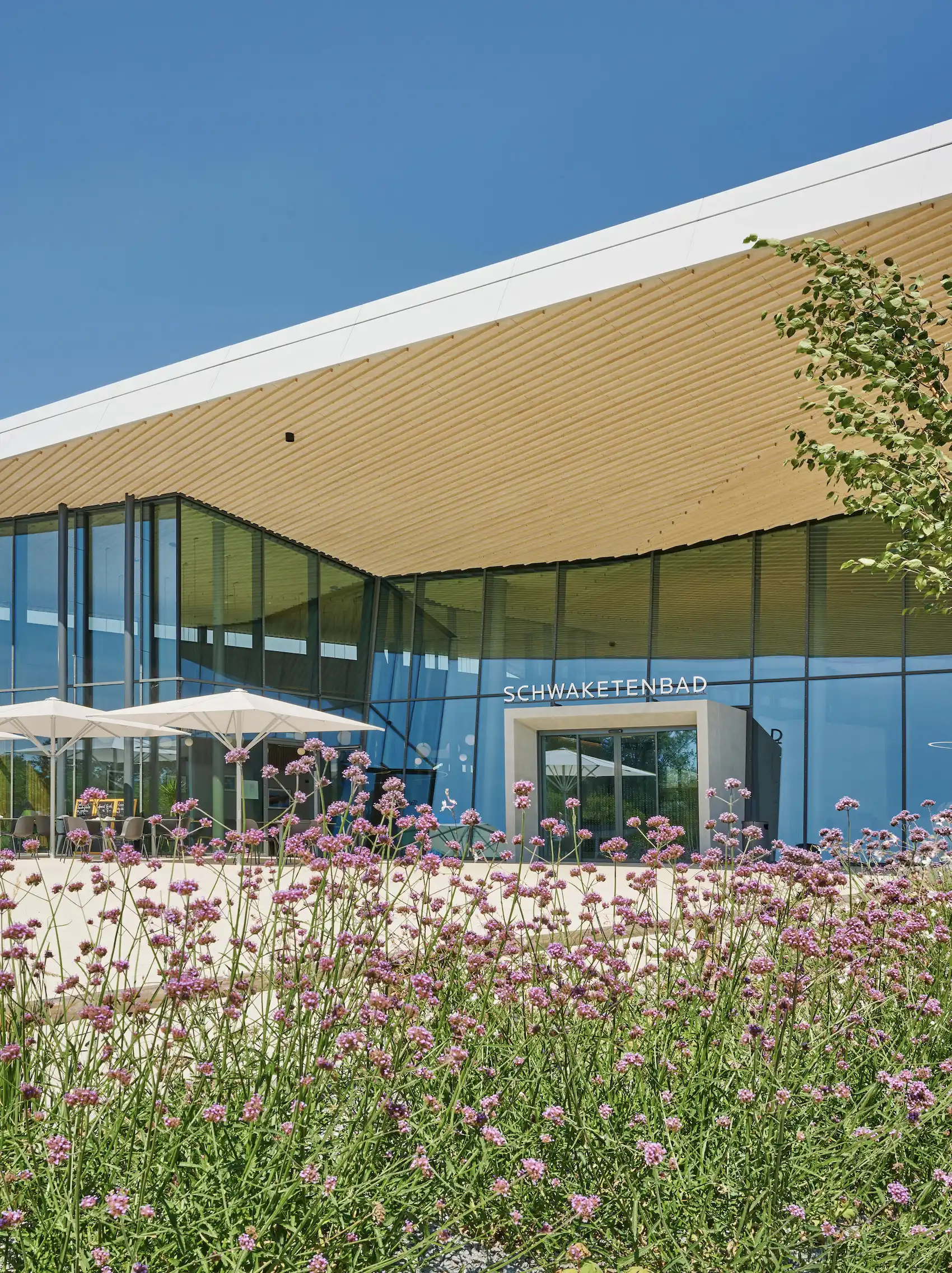
The building’s glazed facades establishe a connection between the indoors and the lush surroundings. Photo © David Matthiessen
The long, side-by-side roofs, supported by steel columns and hidden trusses, have subtle folds and creases that serve to define the Schwaketenbad’s various zones, without interfering with its sense of openness. Clerestory windows between the roofs let the sun angle in, while generously glazed facades (all triple-glazed) provide views of the verdant site at the edge of the city near the Schwaketen and Mainauwald forests.
Within, the material palette is mostly muted, creating a connection to the surrounding landscape: the ceiling’s canting surfaces are clad with untreated spruce ribs, while the floor tile is primarily beige. There are, however, occasional bright pops, including yellow fountains in the play area, red tiled benches, and blue tiled floors and walls for the pools, the latter lending the water a pleasing deep turquoise hue, points out Seib.
Indoor swimming facilities are typically an energy-intensive building type. To reduce the Schwaketenbad’s environmental footprint, the project team has taken numerous steps, covering much of the roof in photovoltaic panels, for instance. They have also satisfied the heating load primarily with a combined heat-and-power system, supplementing that with heat captured from wastewater from the showers and the pools. Combined, these strategies save an estimated 171 metric tons of carbon each year compared with a typical indoor pool complex, according to the architects.
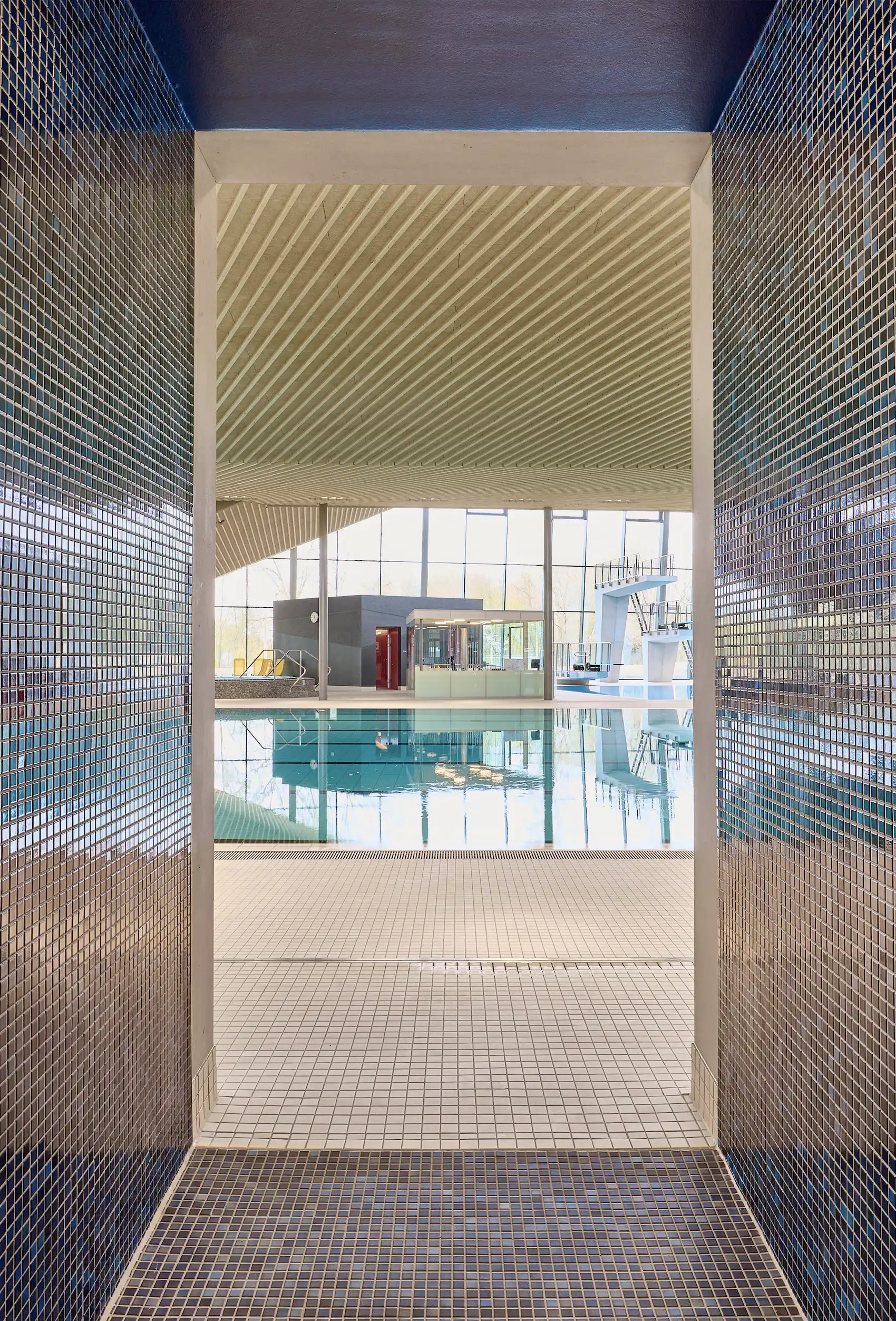
1
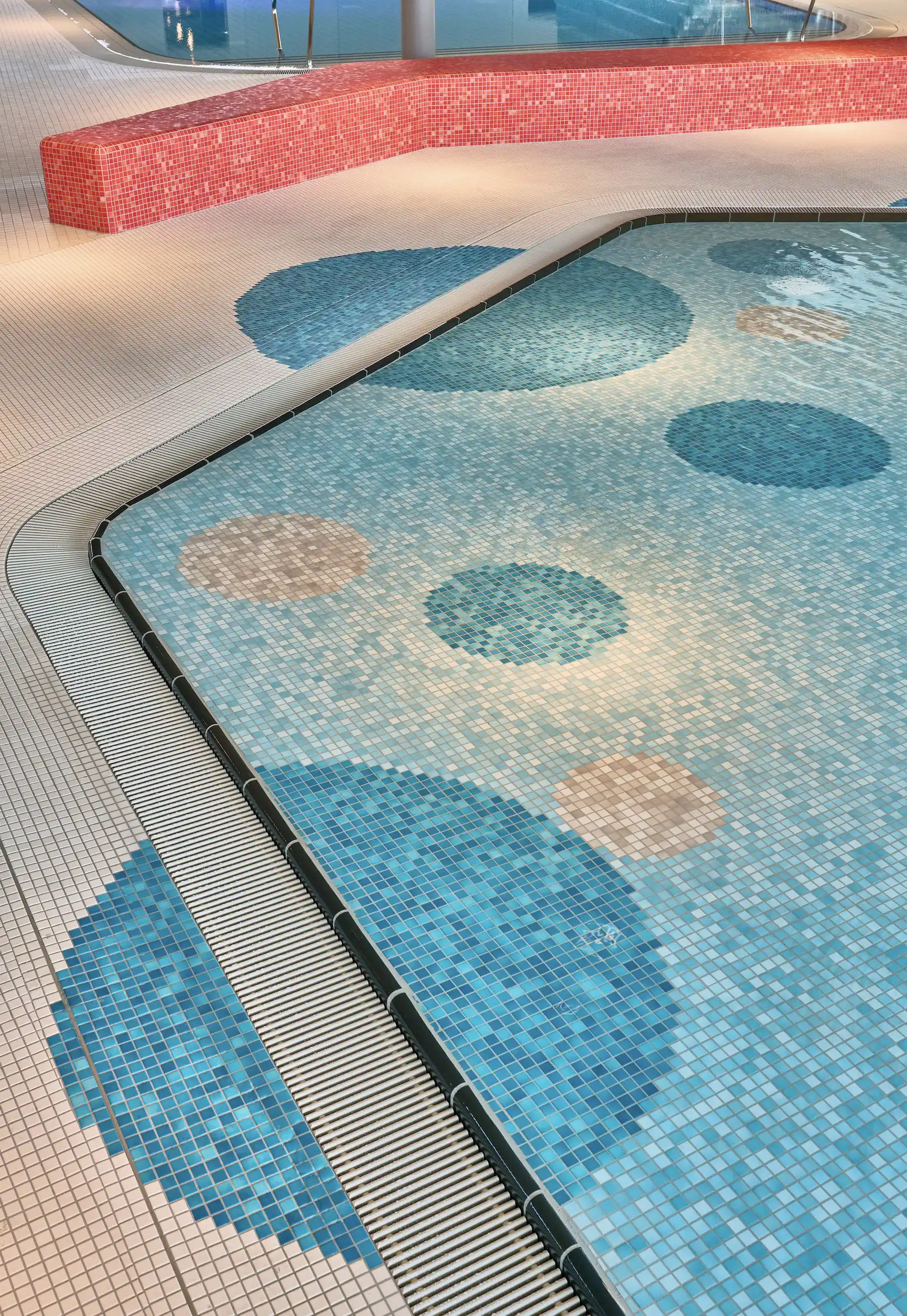
2
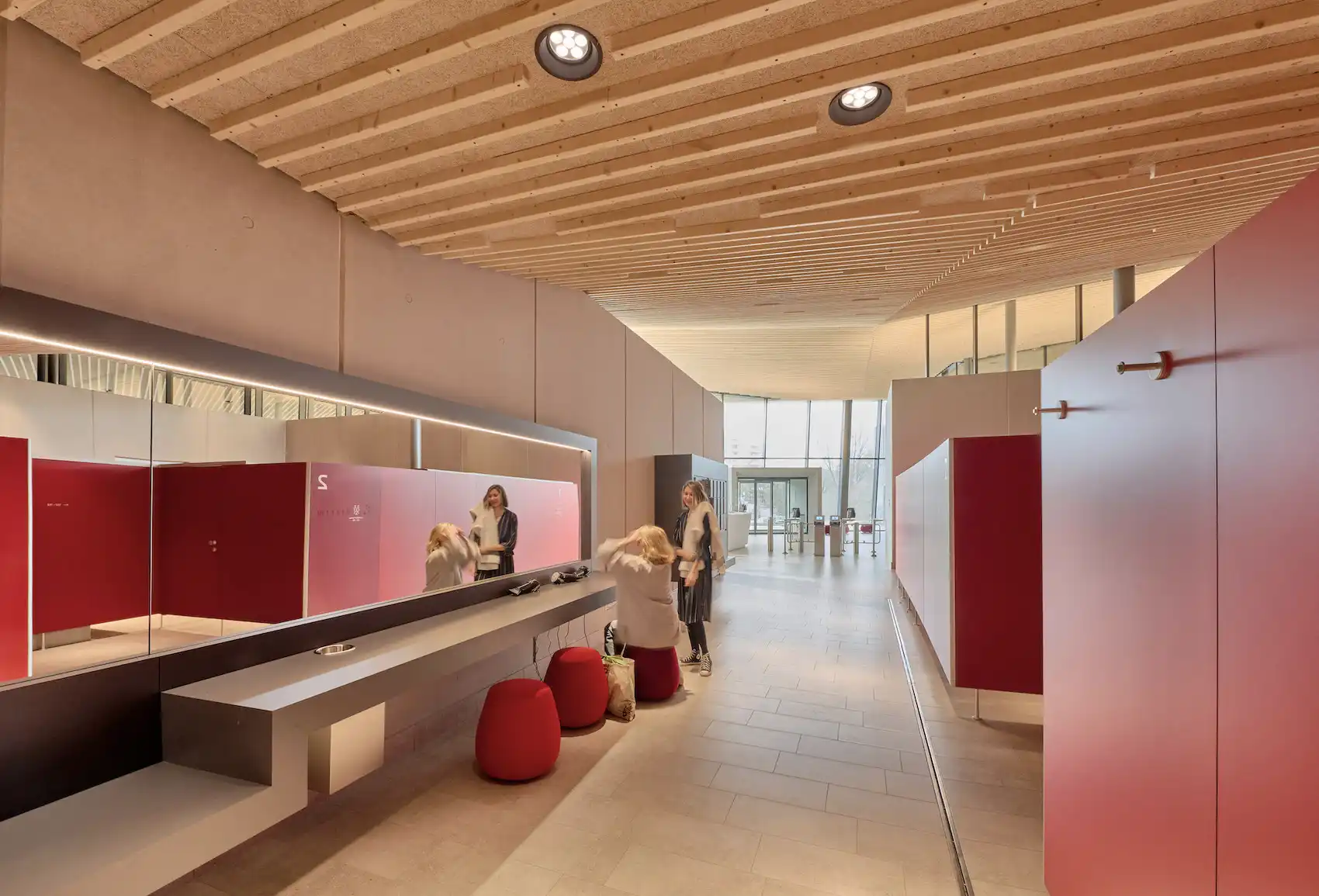
3
Tile detail (1,2); changing area (3). Photos © David Matthiessen
The building is most notable, however, for its ingenious sculptural solution. With a few deft moves, Behnisch has created a spatially engaging and welcoming building well-suited to the varied aquatic pursuits of users of different ages and abilities. At the Schwakentenbad, one can train for serious competition, splash around with the kids, or have a relaxing schvitz in the steam bath.
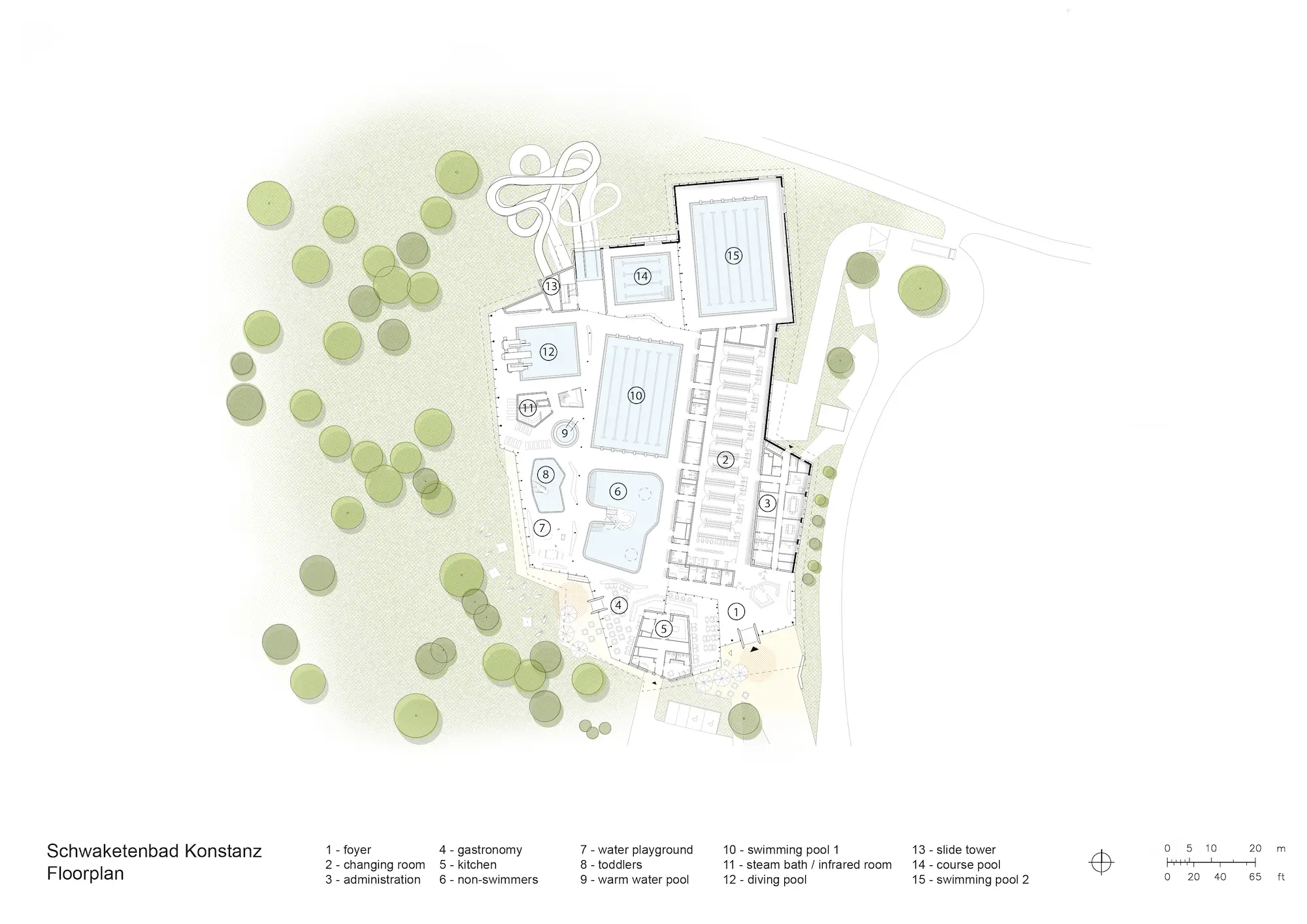
Floor plan (click to enlarge). Image courtesy Behnisch Arkitekten

.webp?t=1692465828&width=1080)
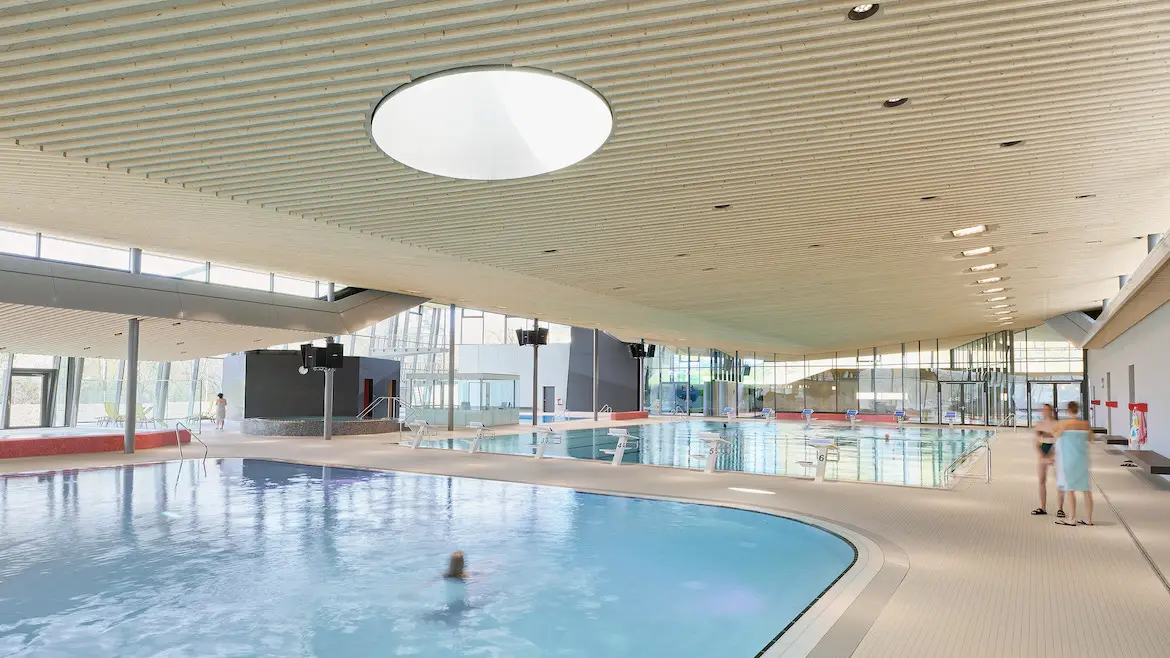
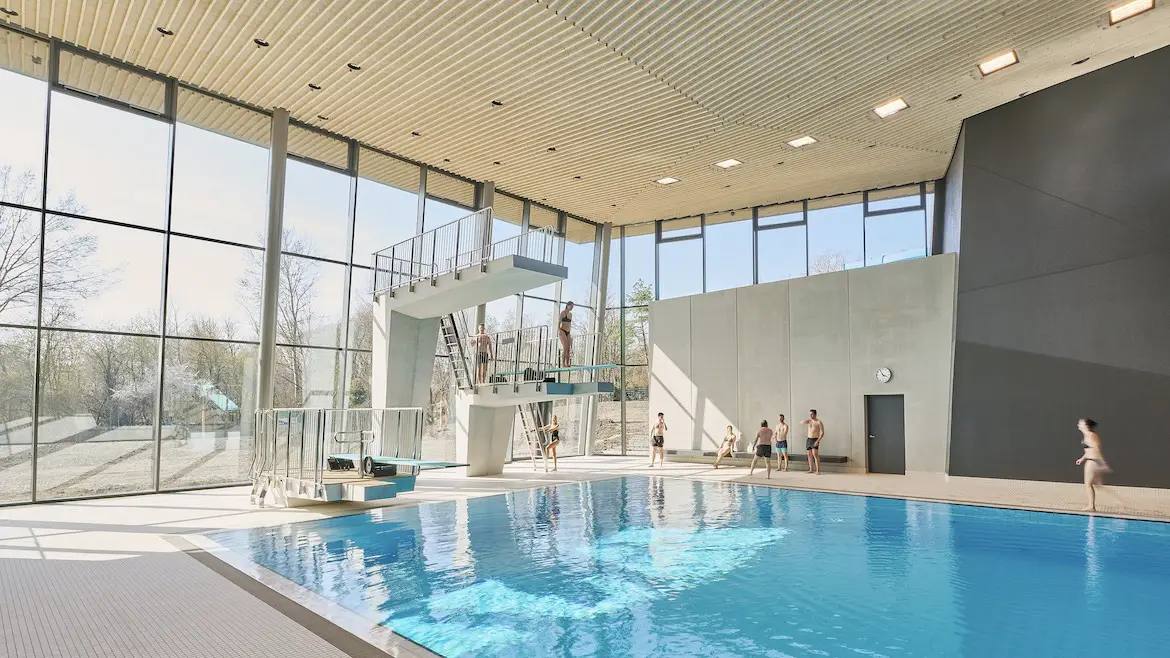
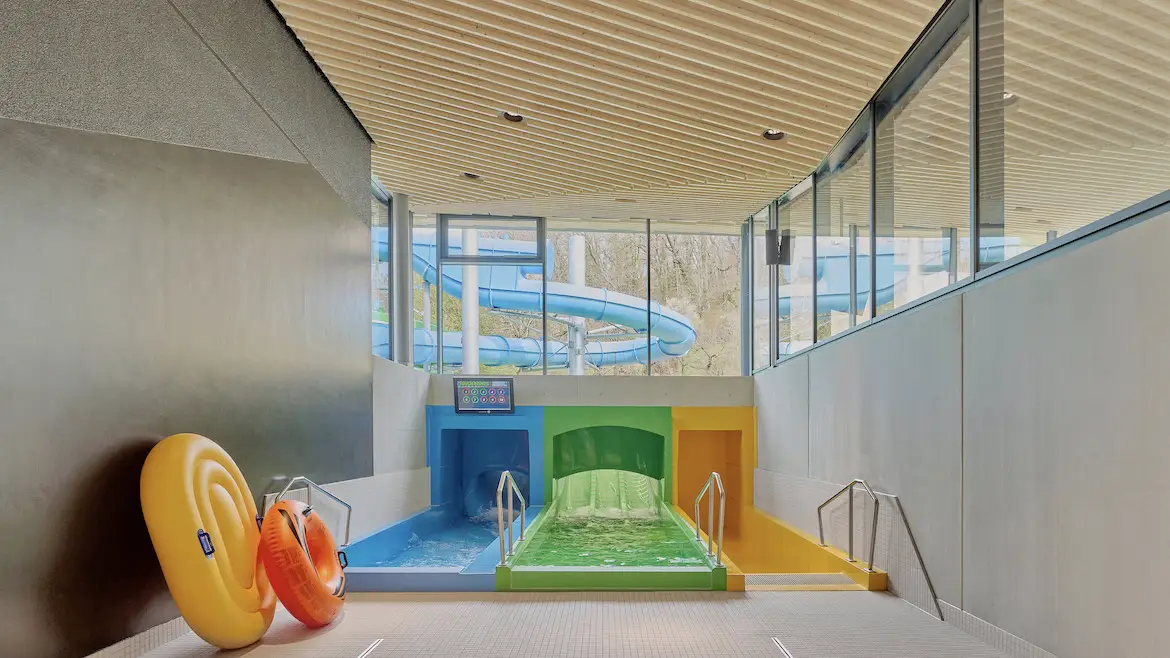
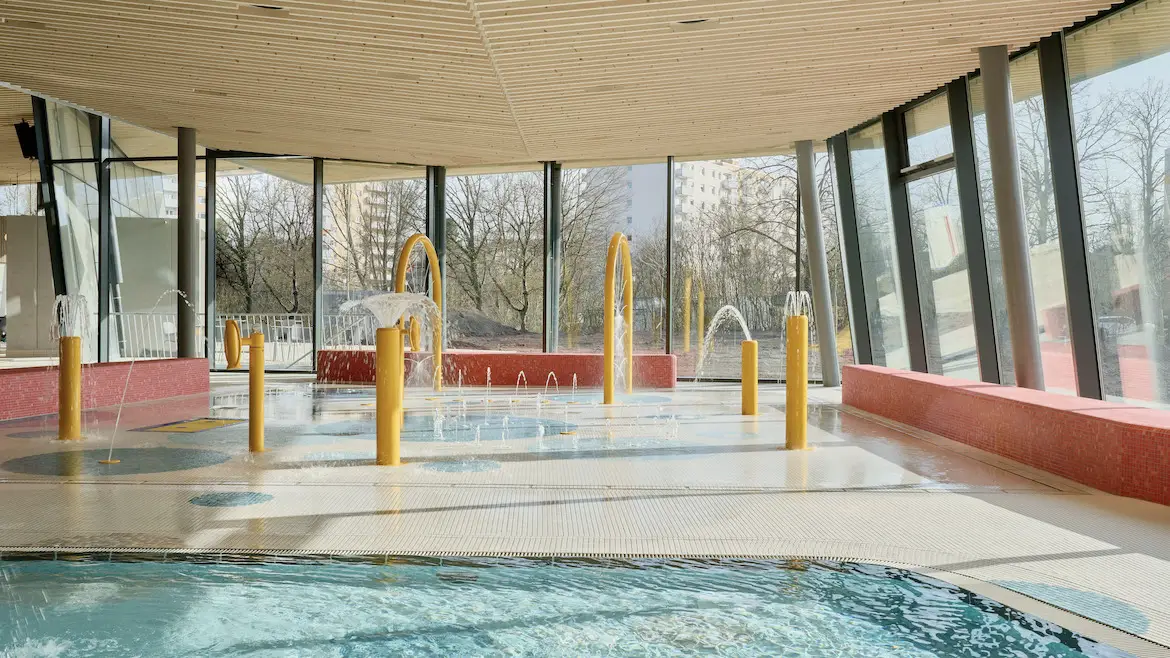



Post a comment to this article
Report Abusive Comment